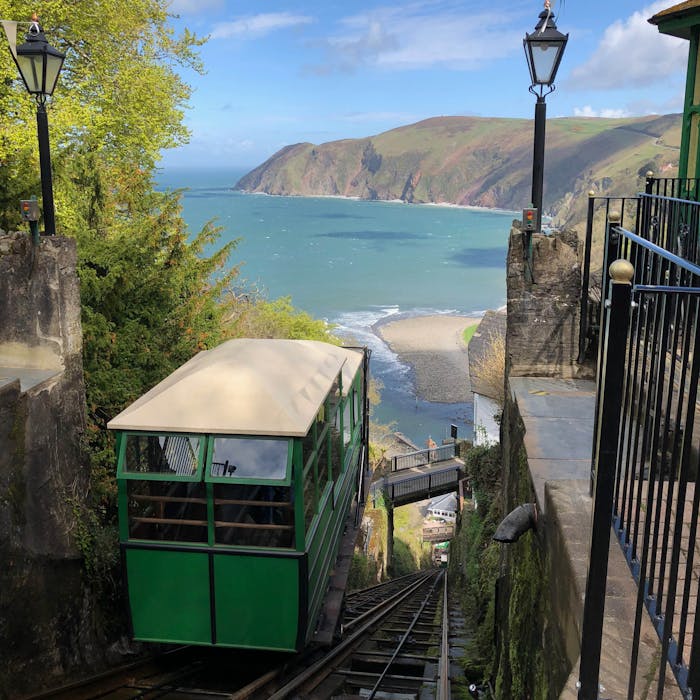
Lynton & Lynmouth Railway - a very functional funicular
Funicular railways have provided important links on steep inclines around Britain for the past couple of centuries. Famous amongst these is the Lynton and Lynmouth Railway on the coast of Exmoor, North Devon.
This Victorian funicular has been running continuously since it opened in 1890, taking tourists and locals between the villages of Lynton and Lynmouth, and is one of the steepest in the country.
Lynton and Lynmouth are twin villages on the North Devon coast. Lynton is up a steep hill, and Lynmouth is below by the sea and the fishing harbour. In the early 1800s this attractive spot was favoured by well-to-do travellers denied their 'grand tour' trips to the mountains and coastline of Europe by the French Revolution and the Napoleonic wars. In particular, the Romantic poets Wordsworth, Coleridge, Shelley and Southey popularised this area as "England's little Switzerland".
Lynton and Lynmouth's tourist industry grew from this point, and in the late 1800s, interest arose in building a funicular or cliff lift both to carry freight and to allow visitors and locals to get between the two villages without labouring up the very steep hill. The first funicular in the UK had opened in 1873 in Scarborough, and any hilly seaside resort now wanted the prestige of its own equivalent.
The civil engineer George Croydon Marks, a disciple of Isambard Kingdom Brunel, played a key role in both the design and financing of the Lynton & Lynmouth Cliff Railway.
In 1887, construction started and the railway opened on Easter Monday 1890. It has been in continuous use ever since, and is the world's highest and steepest water-powered cliff railway in operation, with enjoyable views of the beach and palm-fringed hillside villas as one ascends to Lynton.
The water that powers the funicular is diverted from a higher up river heading to sea. Some of it is piped into the top carriage. The weight pulls the top carriage down and the counter-balanced lower carriage up. Then the water is released to escape to the sea. No pump is required, making the cliff railway a very energy efficient form of travel.
Further reading
Links to external websites are not maintained by Bite Sized Britain. They are provided to give users access to additional information. Bite Sized Britain is not responsible for the content of these external websites.
